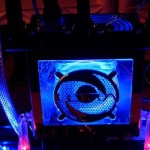SEO has entered a new era in 2026. AI tools are more powerful, users expect instant results and Google continues tightening its criteria for…
WiTrack smacks down Kinect with ‘through wall’ motion detection, insane accuracy
Kinect right, best motion-tracking tool ever made, yes? Wrong, because MIT may have cracked the motion-tracking tool thanks to WiTrack, a “through wall” 3D tracker that uses body radio reflections. The video made us stroke our chins with envy, hoping that MIT implements this new tech into our gadgets, soon. Watch this:
So if you care about motion-tracking at all, WiTrack – name pending until Nintendo jumps down their throats – should open your eyes to some new possibilities. A tracker that monitors our movements through walls though, isn’t that kind of invasive? Well no, as WiTrack uses no camera to find its target, only a WiFi network and a human body.
The full paper from MIT is here, but good luck sifting through it. What we’ve gathered is that WiTrack can localise the human body to within 10 to 13cm. The paper also says that no wireless device is required for the device to work. No moving parts, just a single component to rule them all.
And the video above demonstrates the accuracy of this. The test subject walks along a line, with the tracking dot firmly fixed as he walks in circles. It’s a stunning display of motion-tracking and identification, with current GPS and motion-tracking tools unable to pinpoint a users location as accurately as this. Even pointing direction can be identified and in the video, an arm is lifted from another room and a light is turned off. For this to work, WiTrack just needs to measure the movement of the arm using reflective surfaces. WiTrack knows that the surface of the arm is smaller than the body, and uses this information to track the arm with a high degree of accuracy.
Limitations of the system? Unlike the new Kinect, the WiTrack can only handle one body at a time. When the system is eventually released (and it’s not near finished, said Engadget), expect it to eclipse whatever Microsoft, Leap and Sony is up to.

